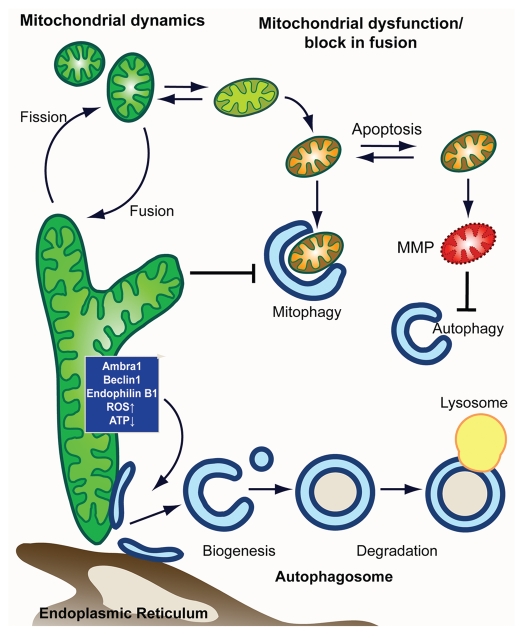Figure 1.
Model for mitochondria-autophagy crosstalk. In this model, we depict the main intersection between in autophagy-mitochondrial crosstalk from the side of (1) autophagy and (2) mitochondria. (1) Autophagy shapes mitochondrial health and number through the selective degradation of mitochondria in a process termed mitophagy. Elimination of damaged mitochondria is facilitated by mitochondrial fission and promotes cell survival. Mitophagic malfunction leads to the accumulation of dysfunctional mitochondria and makes the cell more susceptible to MMP and apoptosis. When cell death is induced, apoptotic executers inactivate pro-autophagic proteins, thus inhibiting autophagy. (2) Autophagic degradation of mitochondria is affected by mitochondrial shape/function, with heavily fused mitochondria being a poor substrate that evades autophagic degradation. Mitochondria, furthermore, are able to control autophagic induction and autophagsomal biogenesis from mitochondria (or other autohagosomal origins such as the er) through mitochondrial localized proteins and/or metabolic products (such as ROS and ATP).

